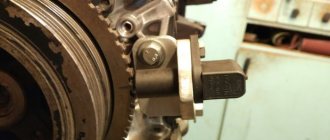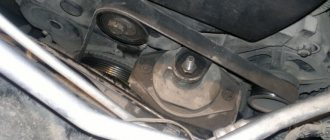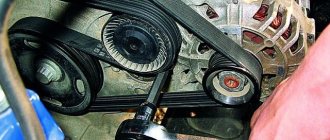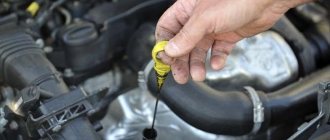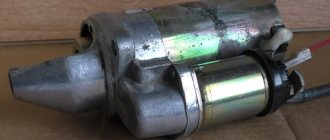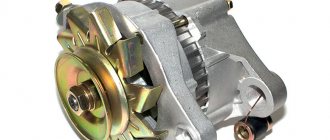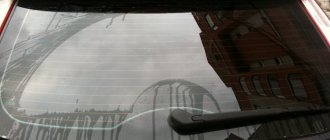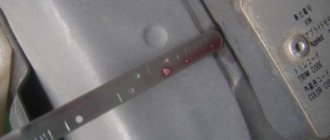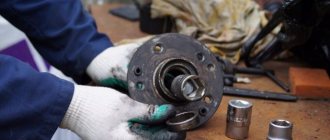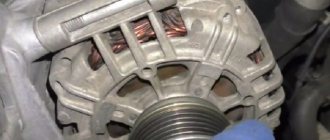Three main mistakes when installing the timing belt that lead to engine breakdowns
New modern cars are equipped with a timing belt drive, which will require replacement almost every 50-80 thousand kilometers.
If all service work on the engine is carried out with your own hands, then the car owner will invariably be faced with the need to replace the timing belt. Let's talk in more detail about common mistakes when performing such a service. Often car owners do not pay due attention to the condition of the gas distribution mechanism drive or change it without following all the recommendations of the car manufacturer, which ultimately leads to critical engine failures. The fact is that when the belt teeth slip, the pistons hit the valves that are not yet closed, which leads to serious damage to the engine and the need for major repairs. That is why it is necessary to carry out such a procedure in full compliance with all technical aspects, or contact specialized workshops where professionals will charge 10-15 thousand rubles for such work.
The car owner must remember that for such work it is imperative to use high-quality original spare parts. During vehicle operation, the belt and pressure rollers are subject to increased loads, and premature wear of the drive and low-quality spare parts will invariably lead to irreparable consequences. And yet it should be said that the main cause of belt rupture and damage to the rollers is incorrectly performed repair work.
Incorrect positioning of marks on pulleys
Most gas distribution drive systems have special marks on the gears along which such a belt is aligned. When servicing the engine yourself, it will be necessary to correctly position such marks, since an error of even one tooth will cause problems with ignition. And if you make a mistake by just a few teeth of the gear, then already at the first start of the engine the piston will break the valves. In the future, such an engine will require serious and expensive repairs.
Incorrect belt tension
Another common problem that is often noted when replacing the timing drive yourself is that the belt is not fully tightened, which leads to its weakening and the likelihood of jumping several teeth. Many car owners are afraid to tighten the belt too much, since, in their opinion, in this case, increased loads are placed on the drive, which leads to its damage. Indeed, an overtightened belt will be subject to increased load, which increases its likelihood of breaking even at runs of up to 50 thousand kilometers. However, an insufficiently tightened belt can also lead to complete engine failure.
Incorrect fixation of the pressure rollers
According to the technology, it is necessary to tighten the timing roller nuts using a special torque wrench. This tool allows you to correctly calculate the force that will be required to fix the rollers and fasten them. Carrying out such work with your own hands, there is a chance to overtighten the nut, which leads to bending of the stud. If the nuts are not tightened enough, this leads to loosening of the gears, the belt begins to dangle, which causes it to break.
To prevent such problems, it is necessary to use a torque wrench when performing such a service yourself, which will also be required when performing various other car repairs. It wouldn’t hurt to purchase such a special tool, especially since its cost today usually does not exceed 500 rubles.
Let's sum it up
If a car owner independently carries out maintenance and repair of the car, he will invariably be faced with the need to replace the timing belt. To perform such work, you will need to purchase not only high-quality pressure rollers and the drive itself, but also a special torque wrench. It is necessary to tighten the roller nuts using such a special tool, correctly tensioning the belt and correctly positioning it along the special marks on the pulleys. This is the only way to perform high-quality maintenance of the car engine, while eliminating the engine wedge and the need for subsequent complex and expensive repairs.
When servicing the motor yourself and changing the timing drive yourself, you need to accurately align the belt to the marks, tighten the roller nuts using a torque wrench and install the belt correctly.
Source
Phases of the GRS mechanism
The phases of the gas distribution system are precisely what makes the car engine function simultaneously, without disruption. If these very phases go astray, then either the piston will not reach TDC at the right time, or the valve will lag behind, in a word, problems are inevitable.
Article on the topic: How to check the ABS sensor for functionality?
The phases of the gas distribution system are always set according to the markings, due to which clear and synchronous operation of the motor is achieved.
Phases of the GRS mechanism
If you need to set the timing marks correctly, you will have to remove the belt. You will have to stock up on keys, screwdrivers and all those tools that will make the work easier. For example, a wrench for socket heads - this is convenient for attaching a nut almost anywhere.
Every expert will confirm that the GDS phases must be installed from the factory. But during active operation of the engine, repairs, etc., the phases shift, the car begins to pull poorly and the motor vibrates.
Algorithm for carrying out an operation to diagnose the correctness of marks:
- The top belt protection cover is removed.
- The gearbox switches to 4th.
- The car is pushed forward until the marks on the shaft coincide with the markings on the cover (bottom).
- Now you need to look under the hood.
- Here, find the clutch housing, remove the rubber lock from it, which blocks access to the hole through which the mark on the flywheel is clearly visible.
Note. This mark must necessarily align with the slot in the crankcase shield (it is triangular). If the marks do not match, it means that the phases of the gas distribution system are shifted. If they match, and the risk on the camshaft also matches, you don’t need to do anything.
Signs by which you can determine the need to replace the timing belt - debunking myths
Today I want to dispel some myths about signs hinting at an early timing belt replacement. If I'm wrong, correct me in the comments. Why did I decide to raise this topic? The fact is that car owners often save on replacing the gas distribution mechanism drive, citing the following reason: “Well, there are no signs indicating this yet.”
.
What are the signs?
– Let’s look at the most popular ones, which ordinary car owners focus on, ignoring the regulatory deadlines.
Are there options that don't bend?
Of course there are, but now they are very rare. Once again, I advise you to read the article about PRIORA, there are models of engines that “didn’t bend” before. However, unfortunately, there are practically no such people now. That’s why many people carry out such tuning of power units.
The point here is also banal and simple - instead of conventional pistons, they install options with “recesses” on top. Then, even if a break occurs, the valves will simply fall into these holes and nothing bad will happen. It will be necessary to install a new belt and synchronize the camshaft and crankshaft.
“Great,” you say. BUT why then aren’t such pistons installed on all models? After all, this is 100% protection.
Again, everything is simple - such pistons eat up part of the engine’s power, and quite a lot. There is still debate about “how much”. Some say about 5 - 7%, but excuse me, this is DEcent! The thing is that such a piston is heavier, and the compression is not as effective. That is why many abandoned this decision. Many - but not all!
Signs of a Dying Belt
Visual
It is believed that a visual inspection will help determine the life of the drive. Fraying, tears, cracks, etc. They can tell you whether the belt will still “run” or break after a few kilometers.
Let's figure it out right away. The belt can not only break. The teeth on it wear out. This is fraught with its “slip” on the camshaft. The valve timing will go wrong, the engine will not only lose its power, but will also have difficulty working. In some cases, pistons and valves may meet. The result of their “union” will be a major overhaul.
So, a visual inspection may not show wear or broken teeth. Some of them may be hidden far from your eyes. Others at this moment will be on the shaft sprockets. Everything looks good, but in reality they are already on the verge of a bummer.
Secondly, not all engines have timing belts within visual reach. Some are hidden by protective covers, which are under the front plate of the motor. Partial disassembly is required to get to them. On most BMW engines, it is necessary to “lower” the power unit in order to reach the timing belt. Having reached it, is there any point in inspecting it? – Since you are already there, it is better to replace it immediately, so as not to deal with nonsense for another 60-100 thousand km.
For example, the Opel Cadet engine belts can be easily seen by opening the hood of the car. But there are very few such models, so one can be skeptical about this sign of timing drive wear.
Replacing the timing belt
- The process of replacing the belt is that you first need to loosen the crankshaft pulley mounting bolts, after which the designated pulley is removed. Next, the mudguard of the belt is removed; before removing it, it is recommended to fix the flywheel using the method indicated above. At the same time, you will need to remove the alternator belt and water pump pulley. The alternator belt is removed after loosening the bolts securing the pump pulley.
- Then you should unscrew the timing belt tensioner pulley bolt and remove the roller from the stud on which it is attached. Typically, the designated roller is changed in parallel with each timing belt change. After removing the roller, the belt can also be removed.
- Now it becomes possible to install a new tensioner pulley and a new timing belt. After installation, the belt should also be tightened. This is done automatically using a tension roller, and from time to time the tightening is done with a pump. The tension force itself is checked so that between the camshaft sprocket the belt can be twisted with a huge and forefinger with a small force of 90 degrees, but less than that. It is also worth considering that the belt should not be sagging.
- After tensioning the belt, it is necessary to check the alignment of the camshaft marks. In this case, if there is a slight deviation, the tension roller is loosened and the belt is rearranged. Then the roller is fixed again, after which you should turn the crankshaft bolt a couple of turns. Then all marks are checked again.
- In this case, if the marks of the crankshaft and camshaft coincide, but at the same time the marks of the distributor do not match, then the bolt that secures the distributor should be loosened. Then the distributor must be turned to a position where the center of the slider and its mark coincide. This will help to avoid such a problem when, for example, when replacing the timing belt, the ignition was set later, the ignition becomes early, etc.
Conclusion
Today I tried to prove that not all the signs of a timing belt replacement that “experienced” car owners talk about are true. You should follow simple rules:
- Strict compliance with regulations. There are cases that the strap will require replacement sooner than the car manufacturers claim. Just use the experience of the owners of the same cars, they will tell you exactly how long the belt will “run”;
- Inquire about specialized services during your next maintenance. The experts will tell you, they have experience in repairing certain brands of cars, you should trust them;
- Visually, you can independently inspect only the timing belt that is not hidden under a protective casing or plate. But there are fewer and fewer such cars. In other cases, you shouldn't bother with this;
- There is no expiration date for the belt. There are only mileage and engine operating hours. I explained the reasons above;
- The contact of the timing drive with aggressive substances can shorten its service life, but it is difficult to find exact signs of this;
- The noise can serve as a good reason to “climb” the timing belt. There is a high probability that he will be screwed.
On this I want to take my leave. Thank you for reading to the end, it means my efforts were not in vain. Ready for discussions in the comments.
Source
Increased load on the belt
If the timing belt tension is too high, it experiences a large load. And this naturally leads to the fact that the belt may break. What consequences might result from this?
Unfortunately, sometimes repairs can cost a pretty penny and have a significant impact on your savings.
If the timing belt breaks, the valves can bend. Since the overhead camshaft stops rotating, they remain in one position, but the crankshaft continues to push the pistons up and they hit the valves.
It is also possible to hit the camshaft pastel or the top of the piston.
This is a pretty bad deal. The valves need to be replaced. And this is not so easy to do. You need to disassemble the engine and change the gaskets. In general, all this will not be cheap. On some foreign cars, repairs will cost up to 40 thousand rubles. Domestic horses are cheaper in this regard.
Human factor
As you know, the average service life of a rubber timing ring is 50-60 thousand vehicle kilometers. But this is only passport, unreal data. In fact, it is rare for any belt, even the highest quality, to “plow” so much. And the belt often suffers from factor number one - illiterate human actions.
Along with under-tightening of the belt, it is also customary to cite an overtightened version as a negative example. For some reason, some experts believe that a tightened belt will work more efficiently. Is it so? Certainly not.
The fact is that the strength of the rubber ring threads is not infinite. With a strong tension, and this is natural, a timing belt break is not far off. By the way, the same result awaits the belt if it is stored incorrectly.
And a loose belt, or rather, not tightened enough, is a sea of problems, absolutely everyone agrees with this. Such a ring will not last long, because vibrations will lead to uneven impact on different parts of the belt. Eventually it will break.
Timing belt
The negligent attitude of a person, in this case the car owner, has an extremely negative impact on the service life of any part of the car, including the belt. For example, if you don’t take enough care of the rubber ring cover of the GDS mechanism, the level of protection will gradually be reduced to nothing. This means that any pebble that gets on the rotating belt will tear it completely.
In general, negligence or absent-mindedness is dangerous everywhere, in any sphere of human activity. There is also an article of the criminal code that punishes this. Here, too, I want to not only warn careless owners, but take tough measures for their own good. Well, for example, how can you forget about NTZh and NPR rollers, because they work in tandem with the belt and have a direct impact on it?!
Note. Most automakers strongly recommend changing the rollers at the same time as the belt. This is explained by the fact that roller bearings tend to fail over time. Lack of lubrication or other reasons have a negative impact on the bearing. In turn, a poorly functioning roller bearing causes the belt to overheat, which then breaks.
A great many difficulties can be caused by various malfunctions of flywheels, for example, their flanges. Often, during the process of dismantling with your own hands, the owner does not act carefully, damaging the flanges. And after this, the latter function extremely dangerously for the belt, as they easily cut the edges of the rubber ring. An incorrectly installed belt guard can have the same result.
Article on the topic: Duplicate license plate for a car
It is also not uncommon that, if assembled incorrectly, the shaft wheels may end up in different planes. What this leads to is probably not worth writing about.
The camshaft locking also has a negative effect on the belt, but this is a rare case. This usually happens due to insufficient lubricant levels. As a result, the forces in the drive increase and several teeth break off at once.
Timing belt tension
People often ask on forums whether it is possible to use a relatively new belt after repairing an internal combustion engine? Reuse is certainly possible, but the ring must be installed in the same way as before dismantling.
Causes
The timing belt is an important element of the car, so it needs to be serviced promptly. The reasons that lead to its jump are as follows:
Contact of oil or cooling liquid on the belt surface
As soon as traces of technical fluid appear on the product, the belt should be changed immediately. Otherwise, this can lead to slipping through the teeth, sliding off the pulley, and even breaking.
It is a serious mistake when drivers simply clean the dirty surface and continue to use this product.
Practice shows that if liquid gets on the belt, it is completely absorbed into the rubber. It loses its properties and begins to stretch.
Late replacement
Most timing belt manufacturers recommend changing their products approximately every 60 thousand kilometers. However, this figure may vary up or down, depending on the quality of the product.
Improper use
It happens that a product may jump due to errors during its operation. A common example is a weakened roller or tensioner. When the belt tension weakens, there is a possibility of slipping from the pulley grooves. In the opposite situation, if when installing the belt, it is overtightened, this will lead to its breakage.
Slippage can also occur when one of the pulleys has strong play. Therefore, it is very important to monitor the tension level of all parts of the mechanism.
The labels are set incorrectly
Sometimes the jump is not visible outwardly, but the engine does not start well and immediately stalls. This can happen if the marks were knocked down or incorrectly set initially. A shift of even one tooth can cause problems with the motor. If the engine is diesel, it will not start even if there is an error of one tooth.
It is necessary to replace the timing belt in safe places using special tools.
This photo shows that the intake is offset by one tooth clockwise; this is one of the most common mistakes when replacing a belt. To prevent this from happening, you can use special pulley clamps when replacing the timing belt.
External damage
Over time, various cracks and depressions may appear on the surface of the consumable, and the threads of the product may begin to peel off. With heavy loads on the belt, even the smallest defects will develop quite quickly. Therefore, they cannot be eliminated on your own. All you can do is replace it as soon as possible.
Low quality spare parts
There are very cheap “non-original” belts on sale. But don't be fooled by their price. Often the resource of such a product is only enough for 20 thousand kilometers. This is followed by either stretching or breaking.
Difficult operating conditions
Unlike a chain, a belt is very sensitive to high and low temperatures, high humidity and other weather conditions. They affect premature wear of the product. Therefore, more frequent replacement may be required.
Consequences
The consequences of the timing belt jumping several teeth can be different - from replacing the timing belt itself to repairing the car’s gas distribution mechanism.
The amount of damage depends on whether the engine has recesses for valves in the pistons or not.
A jump can occur while the valves are being lowered to inject fuel or release gases. The pistons are still moving and can hit the valves hard. This will lead to bending of the latter. This situation is similar to a broken timing belt. You can read more about which engines this happens on in this article.
To avoid this situation, it is recommended to do a timely inspection and, if necessary, change the consumable.
Repair cost
The average price for replacing a belt and roller in car services ranges from one to three thousand rubles. The price range is due to the fact that replacing parts on foreign cars costs approximately 2–3 times more than on domestic cars.
If it turns out that you also need to change the engine water cooling pump and the crankshaft oil seal, then the price will increase by another 1 - 1.5 thousand rubles.
Although there is a huge selection of products on the market at different price levels, you should only choose brands recommended by the manufacturer or their high-quality analogues. Using cheap parts can lead to serious damage and expensive repairs.
For example, if the valves are bent as a result of a belt slipping, then almost the entire cylinder head will have to be replaced. Even if the repair is carried out by yourself, the cost of replacing valves, pump, belt, filling oil and antifreeze, and other parts will be at least 10,000 rubles.
1200 rub. for the photo report
We pay for photo reports on car repairs. Earnings from 10,000 rubles/month.
Write:
Many owners of front-wheel drive VAZs are concerned about the problem of why the timing belt is eating ? Most often this question is asked by owners of the following VAZ models - 2108, 2109, 2110, 2112, 2114, Kalina, Priora, Grant (and this problem occurs on engines with both 8 and 16 valves). There is only one general answer to the question raised: the belt is skewed. And this, in turn, can happen for a number of reasons - the pump is installed unevenly, the roller is of poor quality, a washer of the wrong size is installed between the roller and the block (or it is missing altogether) and some others. Each of the listed problems is solved in its own way. In most cases, work to eliminate the causes can be carried out independently, provided you have the appropriate experience and tools. This will save money, and the repair work itself does not take much time and effort.
After replacing the belt and pulley, the timing belt began to make a strange noise - what to do?
A few days ago I noticed that when warming up an engine that had cooled overnight, a rhythmic noise was heard in the timing belt area. I didn’t attach much importance to this, since I was guilty of a roller that I didn’t change when replacing the timing belt (a break on the highway). Yesterday I finally changed it, the video fell apart in my hands after removal, but the sound not only did not disappear, but also intensified! (Again, when it’s cold). Can anyone tell me by the sound where to dig?
Most likely, the cause of the problem is an incorrect replacement of the timing belt and pulley, so I strongly recommend that you pay attention to the following:
- Friction against the timing cover from the inside
- Malfunction (looseness) of pulleys
- Pump play
- Incorrect installation and loose timing rollers
- Poor quality timing belt
Of course, these are not all possible malfunctions; you can find out more by watching this video.
Reasons why the timing belt eats
In total, there are seven main reasons why the timing belt eats. To begin with, we will simply list and describe them, and in the next section we will talk about how each problem can be solved.
- Incorrect belt tension . In particular, if the belt is overtightened, then a situation is possible where wear occurs on one of its edges, since a significant friction force is generated there.
- Poor quality belt . Sometimes a situation occurs when domestic manufacturers produce low-quality belts that are made from material that does not meet standards or in violation of production technologies. Especially if the belt is cheap and of some unknown brand (simply a fake). Its cross-sectional surface may not be flat, but may have the shape of a cone or oval.
As practice shows, the last described reason occurs most often. And car enthusiasts have invented a universal method with which they can correct the situation.
Correct belt tension without special tools
Below are instructions for properly tensioning the rubber ring of the gas valve mechanism on eight- and sixteen-valve internal combustion engines of the domestic “eight”, “ten” and other similar models.
Examination
First, the tension is checked:
- Turn the crankshaft counterclockwise until the arrow on the camshaft flywheel is below 2 teeth from the rear cover mark.
- Check the tension.
Note. The tension on the “eight-valve” is checked as follows: take the front branch of the belt with your thumb and forefinger and turn it across with a little effort. If you can do it 90 degrees, it won't tighten.
But if the belt is not tightened, it will dangle. When the motor is running, hit the protective casing. All this should be checked by tightening the belt as needed. During throttle applications and idling, there should be no unnecessary noise coming from the belt.
Timing belt diagnostics
Checking on a sixteen-valve engine is carried out as follows. The belt is tightened, again, after turning the crankshaft two turns. Then the coincidence of the indicators between the camshaft wheels is diagnosed (there are two camshafts on the 16-valve). In this case, we are interested in the belt deflection, which should be within 5 point and 4 tenths millimeters under the appropriate load.
Article on the topic: Why is Movil needed in a car and how to use it
Two devices can help in checking.
- 10 kg kettlebell with tape measure.
- Fixed scales.
In the first case, you need to place a tape measure between both camshaft sprockets. Then place a weight on the tape measure and ask an assistant to measure the deflection.
In the second case, we hook the scales in the very center of the belt between the shafts, and then pull it up until 10 kg is pulled out. And at the same time we ask our partner to measure the deflection, which should not be more than the above value.
Tension of the rubber ring of the GRS mechanism
Tension is carried out using a special wrench for the NTZ roller. If you don’t have such a tool, you can use handy tools. For example, take two nails and a screwdriver. The latter is placed between the nails. You can also make a key from a table fork, leaving only the outer teeth, which must be shortened and bent so that they fit under the holes of the NTZ roller.
Troubleshooting methods
Now we list methods for eliminating these causes. Let's go in the same order.
- Belt tension . First you need to check the tension level and compare it with the one recommended by the car manufacturer (usually indicated in the technical documentation for the car, also can be found on the Internet). If this value is higher than the recommended value, then the tension must be loosened. This is done using a torque wrench. If you don’t have one, then it’s better to contact a car service. As a last resort, you can perform this procedure “by eye,” but use the indicated devices as soon as possible. You can also use a regular dynamometer and a regular wrench for this.
- Poor quality belt . If the two edges of the belt have different stiffness, then a situation will arise where the timing roller eats the belt from the softer side. You can check this by replacing its right and left sides. If after replacement the second side does not wear out, then the belt is to blame. There is only one way out, and it consists in purchasing and installing a new, higher quality part.
- Wear of pump bearings . To diagnose this problem, it is necessary to dismantle the belt and check for play on the toothed pulley. If there is play, it means the part needs to be replaced. Bearings cannot be repaired.
- The pump is installed crookedly . This situation is possible if, during the previous replacement, the adjacent surface was poorly cleaned, and small particles of the old gasket and/or pieces of dirt remained on it, but if this happens, then most likely you will understand this by the leak that appears after filling the antifreeze and starting the engine. When installing a new pump (or even an old one, if it is in good condition), be sure to thoroughly clean both surfaces (including the bolt holes), both on the pump itself and on the motor housing, and install a new gasket. In some cases, instead of a gasket, sealant is placed under the pump.
- Problems with the video . The video needs to be reviewed. It should have minimal play and a flat working surface. To check, you can use a ruler or other similar object of the required width. It also makes sense to check the presence of grease in the bearing. If its quantity is small, it should be added. If the roller is of poor quality, it must be replaced. It is almost impossible to repair the bearing, much less the roller surface.
- Damage to stud threads . To correct this situation, there are two options. The simplest is to use a saw with the appropriate diameter for turning internal threads and/or a die for turning similar threads on a stud. Another option is more labor-intensive and involves completely dismantling the block in order to restore the specified thread. This method is used if for some reason it is impossible to use the sword.
Installing washers under the roller
Methods for eliminating belt eating
Below are examples of eliminating the causes of belt wear and eliminating the causes of belt eating.
Fake belt
A poor-quality belt may be the culprit of the problem; in order to check this, you need to turn the belt over and try to start the engine; if the belt starts to slide in the other direction, then most likely the plane of the belt is uneven and has a cone shape, which leads to it slipping and being eaten. This problem is treated by replacing it with a new, higher quality belt.
Incorrect tension
The timing belt must be tensioned as recommended by the manufacturer. This information can be found in specialized books on VAZ car repairs or on the Internet. Over-tightening the belt places a load on the bearings and can cause wear on both the rollers and the pump.
crooked hairpin
As a result of the efforts when tightening the roller, it happens that the roller pin becomes slightly bent and, as a result, the roller tilts. This problem will lead to belt misalignment.
The problem is solved by replacing the stud with a new one or placing half washers under the roller in order to correct the tilt of the stud and align the roller.
Thread damage
Damage to the threads, as well as bending the stud, can change the trajectory of the belt. This problem is solved by unscrewing the stud and running the threads with a sword. In the worst case, it is necessary to dismantle the cylinder head to bore or restore the threads.
Water pump
When the pump receives any damage or wear, no action other than replacing it can be taken. If the culprit is the pump, it must be replaced.
Pump misalignment
The problem is that when installing a new pump, most car enthusiasts often use sealant or do not clean the surface of the old gasket. All these points can affect the tightness of the water pump to the block body, which can affect the trajectory of the timing belt. You should thoroughly clean the surface on the cylinder block from the remains of the old gasket and do not use sealant; just install the gasket that comes with the pump.
Working on rollers
The rollers, like the pump, are subject to aging and wear, and in case of such problems, the rollers only need to be replaced; any other methods of correcting belt wear due to the rollers are impossible
Camshaft gear wear
The camshaft gear is made of soft metal, which can quickly wear out and wear out. Most often, the gear wears out already at a mileage close to 150 thousand. If this problem occurs, the gears must be replaced.
Crankshaft gear
Most often, the crankshaft gear wears to a cone and the belt begins to move outward, which leads to friction on the spacer washer between the gear and the accessory drive pulley. Because of this situation, the belt can squeak and howl, and in most cases of this situation, the belt eats up.
The problem is solved by replacing the crankshaft gear.
We hope our article was useful to you.
